SciArt profile: Brent Foster
Posted by the Node, on 21 March 2024
In this SciArt profile, we find out more about Brent Foster, whose artwork was selected as the Judge’s and People’s Choice in the Node-BSDB virtual art exhibition in the ‘Art by Scientists’ category back in September 2023. Brent is also one of the Node correspondents and has written a wide range of posts for our site. We caught up with Brent to find out more about his recent artistic projects and how he takes inspiration from the marine invertebrates he works with to create his drawings.
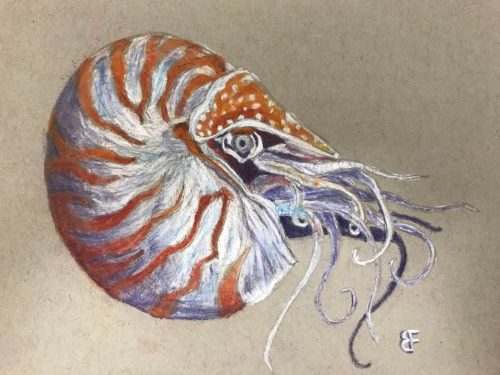
Can you tell us about your background and what you work on now?
I have a rather eclectic range of science research experiences. I earned my bachelor’s degree in neuroscience from Brigham Young University in 2017, with minors in linguistics and creative writing. For two years, I explored human cognitive neuroscience methods — EEG, fMRI, MRS, TMS, and tVNS. Five years ago, I decided to try my hand at basic science research and was introduced to the world of marine invertebrates that challenges some of the basic principles of neuroscience that I used to take for granted.
Now, I’m working with comb jellies and trying to understand how nervous systems could have evolved in multicellular animals.
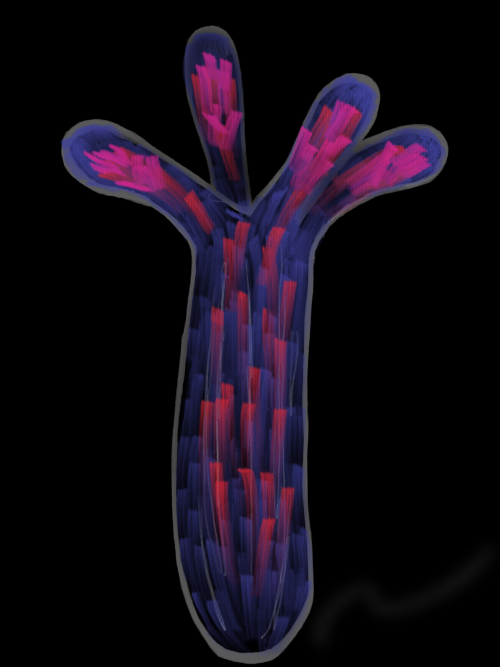
Were you always going to be a scientist?
I’ve always been fascinated with the natural world and learning new things. As a kid, I was on a first-name basis with the librarian of our small local library and had read every book from their animal section. I used to distract my piano teacher with the latest factoids I had learned, and instead of practicing piano we would talk about things like giraffes and how weird their biology is. My dad was a high school biology teacher — I loved visiting his classroom and seeing his displays. One year he gifted me an old microscope with some slides of ants and bees. I’d sit at my desk and just stare through the oculars, mystified at being able to see the details of things that were so small.
So yes, I think I knew I was going to be a scientist. I just didn’t know what type of science I wanted to do.
And what about art – have you always enjoyed it?
I’m not formally trained in art, but I’ve always enjoyed drawing and painting.
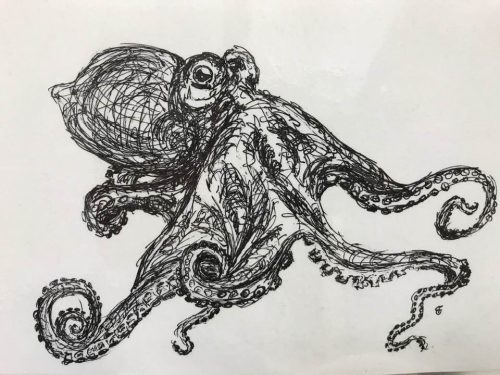
What or who are your most important artistic influences?
I haven’t really studied the great artists in any appreciable depth, but I’d say my favorite artists are Monet and Van Gough. There was a short period where I was fascinated with M.C. Escher, with his patterns that blended from mathematical precision to abstract imagination.
These artists were (and are) inspiring, but to be honest they’re intimidating — heroes on a pedestal looking down on us mere mortals. I’m sure they’ve influenced me in some ways, but I’m not sure it necessarily translates to my artwork. To me, my most important artistic influence was an art teacher during my elementary school years, Mrs. Marian Aranyos. She always inspired me to keep trying new things, and she made me feel like my art was something valuable, even when it wasn’t very good. She gave me space to experiment.
As for subject matter, I’d say nature has always been my greatest muse — especially animals. Nature, by far, is the most creative inventor.
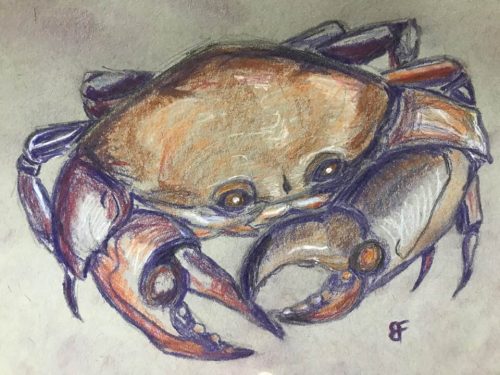
How do you make your art?
I generally prefer drawing (pencil, pen, or chalk pastel, mostly). I think pen drawings, especially, lend themselves to a sort of whimsy that can make challenging scientific concepts feel more tangible and relatable (or at least less scary). I’ve also dabbled with watercolor paints. Lately I’ve been playing around with an app called Sketchbook on my iPad. That’s opened up a whole new world of artistic possibilities.
Does your art influence your science at all, or are they separate worlds?
I don’t know if I’d say that my art is incorporated into my every-day science work. The type of art I create just isn’t precise enough to be technically relevant (although it helps me recognize the aesthetics of, say, micrographs). But my science definitely influences my art, especially since I started my current lab tech position. I’ve been inspired by the marine invertebrates I work with every day. They’re so beautiful and mysterious and remind me of what drew me to science as a kid. Now our home has a wall of chalk pastel drawings of crabs, jellyfish, anemones, nudibranchs — even an octopus wood cutout that my wife and I made together.
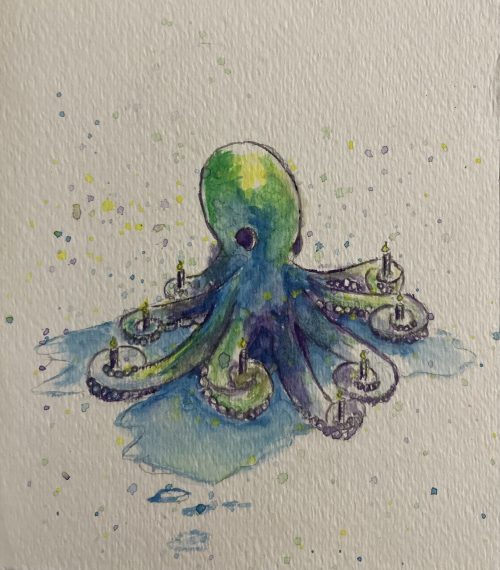
What are you thinking of working on next?
I’m not sure what I’ll work on next. I tend to go through phases where I’ll create several pieces in the course of a few weeks, take a break, then try again when the inspiration strikes.
Just before Christmas, the Whitney Lab hosted an event to benefit the lab’s graduate students. I was able to share several pieces of art related to my research and used them to connect with our local community.
I’m playing around with the idea of using my art to tell some of the stories of science, geared especially for young kids (I think I have The Node’s “Show and Tell” series to thank for that inspiration). I created this science comic telling the story of a paper we published last month in iScience. I also drew an abstract representation of our main findings and submitted it to be considered for the issue’s cover image. It wasn’t selected, but it was a fun exercise.

Find out more about Brent:
The Node Correspondent interview
X/ Twitter: @_brentmfoster
LinkedIn: brentmfoster


 (2 votes)
(2 votes)